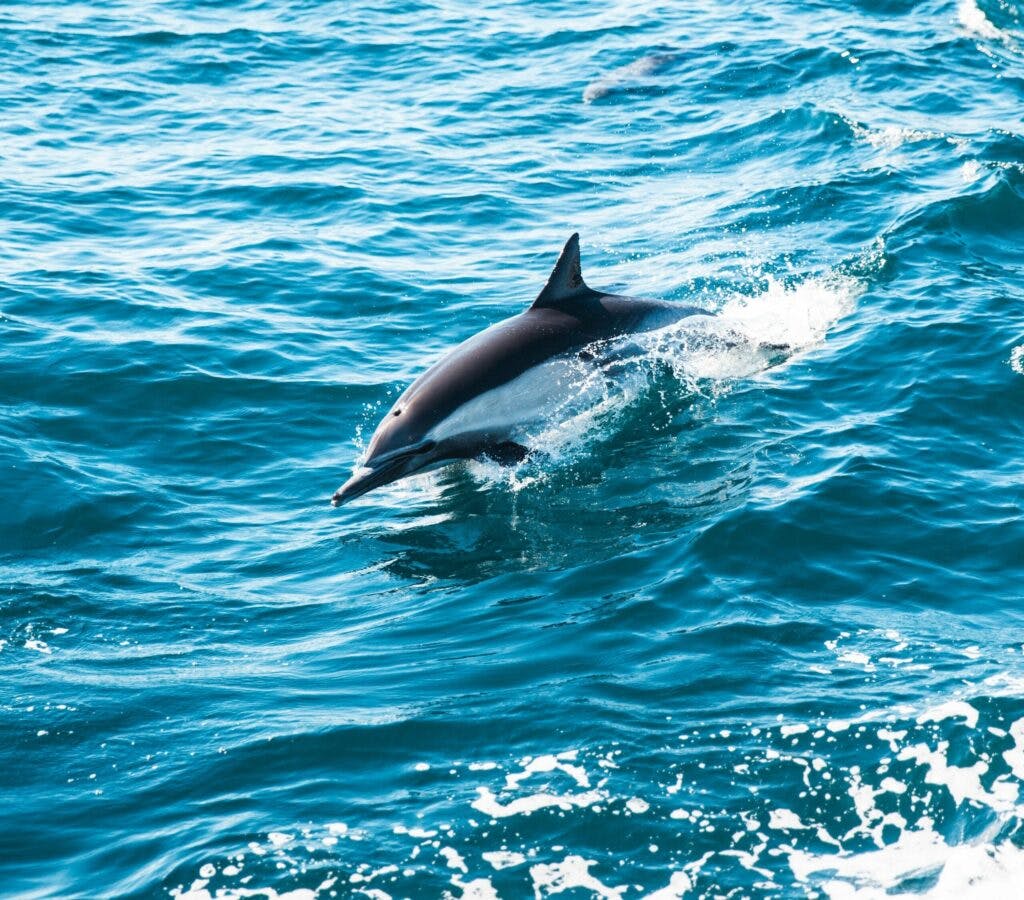- English
- Spanish
- Korean
- Filipino
- Armenian
- Chinese (Simplified)
Pelagic
Prev
Rocky Intertidal
Next
Freshwater Aquatic & Riparian
Habitat Overview
To many the pelagic habitat is the very definition of the ocean, and the largest habitat on earth. Closer to the coast the ocean becomes shallower as the earth’s crust rises from the deep sea, roughly 12,000 feet (3,600 meters), up the continental slope and shelf. This results in dramatic changes to currents, waves, water temperature and density, dissolved gases, nutrients, and ocean life as it flows and mixes around and over these geological features. These changes, among others, create the distinction between the pelagic and coastal pelagic habitat. In both cases, the habitat’s dominant feature is ocean water.
The majority of Santa Monica Bay is coastal pelagic habitat, extending from the surface to near the bottom of the ocean, approaching depths of 1,600 feet (480 meters). In this habitat the water will vary in temperature, light, (both color and amount), density, alkalinity, and in concentrations of dissolved oxygen, carbon dioxide, and other gases. The water is mixed by surface waves, causing it to tumble, as well as laterally flowing in currents forced by tide and wind. All of this influences the presence and distribution of the coastal pelagic biological community of plankton, zooplankton, larvae, squid, fishes, marine mammals, and birds. Three large marine canyons add even further complexity to the coastal pelagic habitat in Santa Monica Bay.
Within Santa Monica Bay, the coastal pelagic habitat extends north to the Ventura-Los Angeles County line and south to Point Fermin.
Status
| Indicator | Score | Confidence |
|---|---|---|
| Habitat Extent | Moderate | |
| Habitat Vulnerability | Moderate | |
| Structure & Ecological Disturbance | Moderate | |
| Biological Response | Low |
Per the Pelagic habitat's 2015 condition, see below for condition details.
Why Is a Healthy Coastal Pelagic Habitat Important?
The Coastal Pelagic habitat is home to an abundance of marine species—from microscopic organisms to fish and marine mammals—and their health is dependent on its health.
Variety of Species
Because the Bay is located at a minor transition between warmer and colder biogeographies within the Southern California Bight, a wider variety of species can be found here than elsewhere.
Marine organisms found in this habitat include microbes, phytoplankton, zooplankton, small schooling fish, larger predatory fish (e.g., California Barracuda, Sphyraena argentea), sea birds, sharks, sea lions, seals, dolphins, and whales.
Recreational and Commercial Use
The coastal pelagic habitat and the species found here support a variety of human activities, ranging from whale watching to sport and commercial fishing, and more.
Ocean Currents and Nutrients
Interestingly, the abundance of these species fluctuates as ocean currents and temperatures change. During El Niño periods, warmer water species, like popular migratory sport fish, increase in abundance, while colder water species likely move north and to deeper and colder waters.
In addition, the Bay’s natural coastal contour and bathymetry of influence ocean currents, upwelling, and other oceanographic processes which have a huge influence on the physical and chemical properties of this habitat.
Upwelling brings nutrients and less oxygenated, lower-pH water from greater ocean depths, making them available to the pelagic marine life. Offshore-blowing Santa Ana winds and create upwelling, as well as two eddies in the Bay—one near Malibu Point and the other near the southern end of the Palos Verdes Peninsula.
Primary Challenges
Natural and Human Activities
This important habitat is exposed to natural shifts in oceanographic and climatic conditions that occur at scales ranging from local to global. In addition, while many human-related activities are heavily regulated to reduce or mitigate their impact on the environment, they can cause bight-wide and local impacts. These include point and nonpoint source discharges like treated wastewater from the City of Los Angeles and the Sanitation Districts of Los Angeles County, ocean intakes for water use and power generation, and shipping. The Ports of Los Angeles and Long Beach are the nation’s busiest port complex and pass the mouth of the Bay just off the continental shelf.
2015 Habitat Condition
Read more about condition of the pelagic habitat as published in the 2015 State of the Bay Report.
Taking Action
Learn more about the work being done by SMBNEP partners and The Bay Foundation to protect and improve the Bay’s Pelagic habitats.
